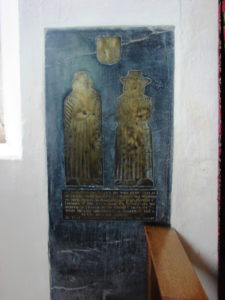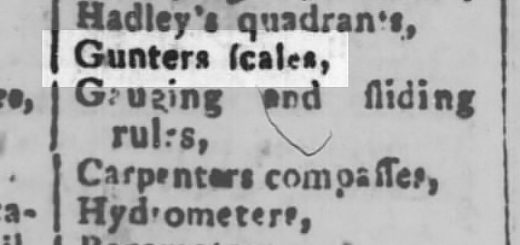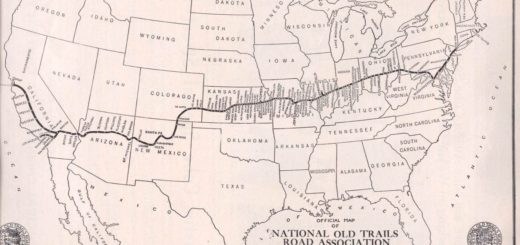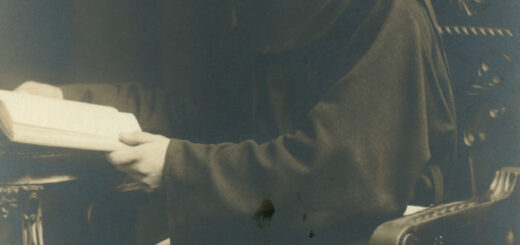Violent Football, Witchcraft, and the King James Bible: Another Gunter Connection Tale
European football can be (and has been) a brutal sport. So much so that during its formative years in England it was banned several times strictly because of the violence among players or among the throngs of fans turning out for the games.
The earliest known reference of such activity comes from a reporting from Newcastle-upon-Tyne on September 15, 1280, about a game of ball being played in the small village of Ulgham in Northumberland. It is also one of the earliest known uses of the word “ball” in the English language. [1]
Henry, son of William de Ellington, while playing at ball at Ulkham on Trinity Sunday with David le Keu and many others ran against David and received an accidental wound from David’s knife, of which he died on the following Friday. They were both running to the ball, and ran against each other, and the knife hanging from David’s belt stuck out so that the point through the sheath struck against Henry’s belly, and the handle against David’s belly. Henry was wounded right through the sheath and died by misadventure.
Only a few decades later in 1314 a proclamation in London by King Edward II banned the sport outright. [2]
Forasmuch as there is great noise in the city caused by hustling over large balls, from which many evils may arise, which God forbid, we command and forbid on behalf of the king, on pain of imprisonment, such game to be used in the city in future.
There would be another thirty or so further attempts to ban the sport over the next 300 years. [3] However, as it goes with peasant customs—especially games of sport—outright bans were ineffectual and the popularity of the sport continued to grow.
That leads us to the latest Gunter connection tale.
Our Gunter line traces through Kintbury, Berkshire, England, to my 12th great-grandfather John “Gentleman” Gunter (1535-1624). You can read more about him at the end of this piece. Our tale concerns his brother, Brian Gunter (b. ~1531), my 13th great-uncle. Brian is associated with a famous case of witchcraft in another area of Berkshire, North Moreton. It all began with a game of—you guessed it—football gone awry.
A parish registry entry for May 1595 reads,
Gunter’s son and ye Gregory’s fell together by ye years at football. Old Gunter drew his dagger and both broke their heads, and they died both within a fortnight after.
The story goes that Brian’s son stepped in to break up a fight during the match but was attacked by the Gregory brothers. Brian intervened, hitting both Gregory boys on the head with the butt of his knife, leading to their deaths two weeks later. This set off a long-standing feud between the two families. Cut to a few years later when Brian’s daughter, Anne, took ill while Brian was away visiting another daughter, Susan, at Oxford. Anne had serious fits and seizures, even vomiting up pins! She babbled about a sister-in-law to the dead boys, Elizabeth Gregory, and other Gregory relatives—Agnes Pepwell and her daughter, Mary Pepwell—during her fits. Agnes was a purported known witch at the time thus it quickly came to pass that Anne Gunter had been bewitched by the Gregory family [4]. Among the spells cast upon Anne was one that allowed her to read with her eyes closed.
Brian Gunter tried unsuccessfully for years to obtain a conviction against the Gregory family in the Abingdon assizes courts but kept pursuing the matter all the way to the Star Chamber court in London in 1609. This court was an informal court initially set up by current or retired justices and other influential men of the day to hold accountable men who were otherwise untouchable in the official courts due to status or politics. However, within years it became a rather corrupt entity, itself, and was used mostly to seek retribution against one’s enemies.
At this point, the case had caught the attention of both the Bishop of Salisbury and King James. The King sent two members of the First Oxford Company to scrutinize the case and testify at trial. The First Oxford Company was the band of men at Oxford who were tasked at that time with creating the third English translation of the Bible—the King James Bible. One of the men, John Harding, revealed that under examination Anne could not, in fact, read with her eyes closed. Under pressure, Anne eventually confessed that her father had coerced her into making the accusations all the years prior and had given her potions designed to feign illness. Brian was held at the Archbishop of Canterbury’s home at Lambeth Palace for a time but was eventually allowed to return to his home in North Moreton in disgrace.
I’m sure that he was rubbed all the more raw by the fact that the other Oxford man to testify against him was Thomas Holland, regius professor of theology and rector of Exeter College, Oxford. Thomas Holland was also Brian Gunter’s son-in-law, having married Brian’s other daughter, Susan, in North Moreton in the early 1590s. Thomas and Susan had six children yet I know nothing of their history. Therein lies our connection to the foundations of the King James Bible. [5]
Brian Gunter relentlessly continued his verbal and litigious attacks against the Gregory family into his eighties. The last record of him of any account was when he led a mob outfitted with pikes and staves and marched against a local vicar over mistreatments that dated from before the witchcraft kerfuffle. You see, at this time North Moreton had no resident local lord of the manor but was instead run by a few influential families, the Gregories among them. The Gunter family were newcomers to the region, c. 1587, and Brian Gunter quickly became known as a difficult person. He felt he had been mistreated unfairly regarding some tithing matter and this is likely what lead to the football fiasco mentioned at the start. So years later he lead an angry mob against an appointed vicar related to the tithing issue and this landed him in the Star Chamber court yet again. The outcome of that case is unknown. Marching alongside him, however, was his then widowed daughter, Susan. Hopefully she had some influence and Brian was spared from further punishment. Brian Gunter died at Oxford in 1624, perhaps at the home of his daughter, Susan. The Star Chamber was abolished in 1641 following an official decree from the Long Parliament over the Chamber’s years of abuse of religious dissenters.
Finally, a little bit of information of interest to those following Gunter genealogy. Brian Gunter’s brother, John Gunter (1535-1624), and his wife, Alice (Keeblewhite) Gunter (1540-1626) lived in a separate area of Berkshire, England. John was laid to rest in Kintbury where there is a brass monument to he and Alice on the wall of St. Mary’s Church there.
The family crest (remember the three sinster gilded palms) appears above the brass silhouettes. A copy of this monument also appeared for a time in St. John’s Church at Cirencester, in the northwest of Gloucester where Alice was laid to rest. A description of the Cirencester monument reads [6],John Gunter and his wife are represented in the stiff dresses of the latter part of the sixteenth and early part of the seventeenth century, from Elizabeth’s later years to the beginning of Charles I.’s reign. The man wears a long furred robe, the sleeves of which are ornamented with velvet and shewing the sleeves of the doublet beneath. Around his neck is a ruff, and frills round his wrists, the head is bare and the beard is cut in the quaint and formed way not uncommon in the time of James I. The woman wears a broad brimmed hat, a ruff round the neck, and a stiff-bodied full-buttoned dress with tight sleeves. The inferiority of the execution of this brass to those of earlier date is very apparent, and the attempt to give the effect of shading by means of hatched lines is very poor. It is, however, very usual in brasses of this and subsequent periods.
The brass at Kintbury is an exact copy of this brass, with the exception of the inscription.
Inscription.—The inscription is in capitals:—
MR. JOHN GUNTER AND ALICE HIS WIFE BEING FULL AS OF YEARS SO OF BOUNTY AND CHARITY ARE GATHERED | TO THEIR FATHER IN PEACE. SHEE WAS HERE BURYED | 18° MARTH AO. DNI, 1626, AGED 86 YEARES. HEE WAS | BURYED AT KYNTBURY IN THE COUNTY OF BERKS | WITH THE LIKE MONUMENT 2D JANVARII, AO. DNI | 1624, AGED 89 YEARS. | JOS. PLAT AR. EORONDM. GENER ET EXECR HOC POSUIT.
The Kintbury Registers contains this memoir from a 1624 entry, following John Gunter’s passing, “1624, John Gunter, gent’ was buried the second day of January.”
[1] Calendar of Inquisitions Miscellaneous (Chancery) (London, 1916), vol. I p. 599, item 2241.
[2] Mount, Toni (2014), Everyday Life In Medieval London: From The Anglo-Saxons To The Tudors, Amberley Publishing, The Hill, Stroud, Gloucestershire, GL5 4EP
[3] Orejan, Jaime (2011). Football/Soccer: History and Tactics. USA: McFarland & Company. p. 18. ISBN 978-0-7864-4784-8.
[4] Sharpe, J. A. (1999) The Bewitching of Anne Gunter: A Horrible and True Story of Deception, Witchcraft, Murder, and the King of England, ISBN13: 9780415926928.
[5] http://kingjamesbibletranslators.org/bios/Thomas_Holland/
[6] Davis, Cecil Tudor (1899) The Monumental Brasses of Gloucestershire. London, Phillmore & Co., 36, Essex Street, Strand




Recent Comments